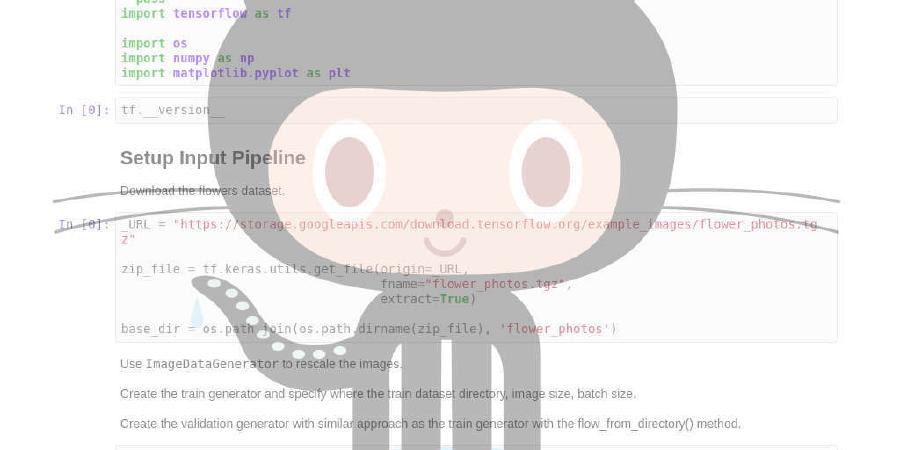DeepX-inc/machina

Deep Reinforcement Learning framework
| repo name | DeepX-inc/machina |
| repo link | https://github.com/DeepX-inc/machina |
| homepage | |
| language | Python |
| size (curr.) | 7185 kB |
| stars (curr.) | 222 |
| created | 2017-09-10 |
| license | MIT License |
machina
machina is a library for real-world Deep Reinforcement Learning which is built on top of PyTorch.
machina is officially pronounced “mάkɪnə”.
Features
High Composability
Composability is an important property in computer programming, allowing to dynamically switch between program components during execution. machina was built and designed with this principle in mind, allowing for high flexibility on system and program development.
Specifically, the RL-policy interacts with the environment via generated trajectories, making the exchange of either components simple. For example, using machina, it is possible to switch between a simulated and a real-world environment during the training phase.
Base Merits
There are merits for all users including beginners of Deep Reinforcement Learning.
- Readability
- Intuitive understanding of algorithmic differences
- Customizability
Advanced Merits
Using the principle of composability, we can easily implement following configurations which are otherwise difficult in other RL libraries.
- Easy implementation of mixed environment (e.g. simulated environment and real world environment, some meta learning settings).
- Convenient for combining multiple algorithms (e.g. Q-Prop is combination of TRPO and DDPG).
- Possibility of changing hyperparameters dynamically (e.g. Meta Learning for hyperparameters).
1 Meta Reinforcement Learning example
We usually define meta learning as a fast adaptation method for tasks which are sampled from a task-space. In meta RL, a task is defined as a MDP. RL agents have to adapt to a new MDP as fast as possible. We have to sample episodes from different environments to train our meta agent. We can easily implement this like below with machina.
env1 = GymEnv('HumanoidBulletEnv-v0')
env2 = GymEnv('HumanoidFlagrunBulletEnv-v0')
epis1 = sampler1.sample(pol, max_epis=args.max_epis_per_iter)
epis2 = sampler2.sample(pol, max_epis=args.max_epis_per_iter)
traj1 = Traj()
traj2 = Traj()
traj1.add_epis(epis1)
traj1 = ef.compute_vs(traj1, vf)
traj1 = ef.compute_rets(traj1, args.gamma)
traj1 = ef.compute_advs(traj1, args.gamma, args.lam)
traj1 = ef.centerize_advs(traj1)
traj1 = ef.compute_h_masks(traj1)
traj1.register_epis()
traj2.add_epis(epis2)
traj2 = ef.compute_vs(traj2, vf)
traj2 = ef.compute_rets(traj2, args.gamma)
traj2 = ef.compute_advs(traj2, args.gamma, args.lam)
traj2 = ef.centerize_advs(traj2)
traj2 = ef.compute_h_masks(traj2)
traj2.register_epis()
traj1.add_traj(traj2)
result_dict = ppo_clip.train(traj=traj1, pol=pol, vf=vf, clip_param=args.clip_param,
optim_pol=optim_pol, optim_vf=optim_vf, epoch=args.epoch_per_iter, batch_size=args.batch_size, max_grad_norm=args.max_grad_norm)
You can see the full example code here.
2 Combination of Off-policy and On-policy algorithms
DeepRL algorithms can be roughly divided into 2 types. On-policy and Off-policy algorithms. On-policy algorithms use only current episodes for updating policy or some value functions. On the other hand, Off-policy algorithms use whole episodes for updating policy or some value functions. On-policy algorithms are more stable but need many episodeos. Off-policy algorithms are sample efficient but unstable. Some algorithms like Q-Prop are a combination of On-policy and Off-policy algorithms. This is an example of the combination using ppo and sac.
epis = sampler.sample(pol, max_steps=args.max_steps_per_iter)
on_traj = Traj()
on_traj.add_epis(epis)
on_traj = ef.add_next_obs(on_traj)
on_traj = ef.compute_vs(on_traj, vf)
on_traj = ef.compute_rets(on_traj, args.gamma)
on_traj = ef.compute_advs(on_traj, args.gamma, args.lam)
on_traj = ef.centerize_advs(on_traj)
on_traj = ef.compute_h_masks(on_traj)
on_traj.register_epis()
result_dict1 = ppo_clip.train(traj=on_traj, pol=pol, vf=vf, clip_param=args.clip_param,
optim_pol=optim_pol, optim_vf=optim_vf, epoch=args.epoch_per_iter, batch_size=args.batch_size, max_grad_norm=args.max_grad_norm)
total_epi += on_traj.num_epi
step = on_traj.num_step
total_step += step
off_traj.add_traj(on_traj)
result_dict2 = sac.train(
off_traj,
pol, qf, targ_qf, log_alpha,
optim_pol, optim_qf, optim_alpha,
100, args.batch_size,
args.tau, args.gamma, args.sampling,
)
You can see the full example code here.
To obtain this composability, machina’s sampling method is deliberatly restricted to be episode-based because episode-based sampling is suitable for real-world environments. Moreover, some algorithms which update networks step by step (e.g. DQN, DDPG) are not reproduced in machina.
Implemented Algorithms
The algorithms classes described below are useful for real-world Deep Reinforcement Learning.
Installation
machina supports Ubuntu, Python3.5, 3.6, 3.7 and PyTorch1.0.0+.
machina can be directly installed using PyPI.
pip install machina-rl
Or you can install machina from source code.
git clone https://github.com/DeepX-inc/machina
cd machina
pip install .
Quick Start
You can start machina by checking out this quickstart.
Moreover, you can also check already implemented algorithms in examples.
Documentation
You can check the documentation.
Web Page
You can check machina’s web page.







